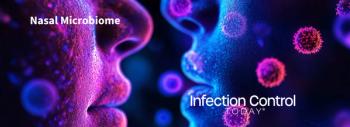
Take J&J COVID-19 Vaccine As Last Resort, CDC Recommends
Any COVID-19 vaccine is better than none. But the CDC recommends that people get the Janssen vaccine only if they can’t get the Pfizer/BioNTech or Moderna vaccines.
A small number of very rare but dangerous blood clots linked to the Johnson & Johnson COVID-19 vaccine prompted the Centers for Disease Control and Prevention (CDC) last night to endorse the
Nine deaths have resulted from patients getting a condition called thrombosis with thrombocytopenia (TTS) that have been linked to the J&J vaccine. About 17 million people in the United States have gotten the J&J vaccine. There have been 57 TTS cases altogether.
The recommendation came from the CDC’s Prevention's Advisory Committee on Immunization Practices (ACIP), whose members endorsed the recommendation unanimously.
“Given the current state of the pandemic both here and around the world, the ACIP reaffirmed that receiving any vaccine is better than being unvaccinated,” the CDC said in its recommendation. “Individuals who are unable or unwilling to receive an mRNA vaccine will continue to have access to Johnson & Johnson’s COVID-19 vaccine.”
Of the 57 cases, most occurred in women 18-49 years old, and 36 required treatment in intensive care units. Since April 2021, the rate of TTS has slowly increased to 3.8 per million doses administered. While the condition remains rare, there have been 9 reported deaths so far, 7 in women and 2 in men.
Because the initial regimen only consists of 1 dose, as opposed to 2 shots for the mRNA vaccines, the Janssen vaccine was widely rolled out among populations for whom receiving a multi-dose series would prove more difficult, such as low-income people or people experiencing homelessness.
The CDC
“More than 200 million Americans have completed their primary vaccine series, providing protection against COVID-19, preventing millions of cases and hospitalizations, and saving over a million lives…I continue to encourage all Americans to get vaccinated and boosted," CDC Director Rochelle Walensky, MD, said.
This article first appeared in
Newsletter
Stay prepared and protected with Infection Control Today's newsletter, delivering essential updates, best practices, and expert insights for infection preventionists.






